A few weeks ago for midterm break, I flew to Luang Prabang with my housemates Nanny and Alex to go on a two-day trek in the north. The trek left from Luang Prabang, which is a fairly sizable city and popular tourist destination, but it crossed through areas of the Luang Prabang province that are still quite remote. Previously, my only glimpse of the Laos beyond Vientiane was on the motorcycle trip, which opened my eyes to the majority of the country that is still rural and undeveloped.
We decided to go with a well-known ecotourism company here called Green Discovery. The three of us were joined by five other hikers, all of whom were travelers from Europe or the US. We had three guides, and each represented one of the ethnic groups in the areas that we would be passing through: Lao Loum (or lowland Lao people, who make up the majority), Khmu, and Hmong. They provided us with information along the way, some practice speaking Lao, and translation with the local villagers.
While learning Lao, I sometimes realize how obscure it is–there are few Lao speakers in the world, and I won’t get a chance to use it much when I leave. However once we got into the villages, many people didn’t even speak Lao, instead speaking the language of their ethnic group. Many of the children there learn Lao at school (if there is a school), but it’s still almost like a foreign language, and they may not ever read, write or speak it fluently.
Saying Hello in Laos:
Lao: sabaidee
Khmu: samailuh
Hmong: nyaw zhong
On the first day, we were driven an hour further north on highway 13 (the road we took across the country on the motorcycle trip), where we began our trek. The landscape took us gradually up, over hillsides covered in sticky rice paddies (which are dry, and not flooded, like lowland rice paddies) and through many, many streams. Because it’s the rainy season, all of the streams were high, and my boots remained constantly damp. The forest we crossed was mostly jungle, and we waded through water, heat, and clouds of mosquitoes, pushing through narrow and overgrown trails, which are only used by villagers and other trekkers.
We arrived before sundown at the village where we would spend the night–Ya Nang, a Khmu village only about 40 miles (60 km) from Luang Prabang, but a world away in daily life. As rural villages go, it seemed moderately well-off–there was a school, and two generators in town that provided electricity to some buildings. Still, most of the people were farmers, and motorbikes and shops that sold packaged goods were almost nonexistent. We washed off in the river, and then hung out near the house where we would stay, where it seemed as though all of the children in the village gathered to stare and play in the vicinity of the strange visiting falang.
Although we could barely communicate, since most of them didn’t know Lao, they enjoyed smiling for our cameras and then swarming us to catch a glimpse of themselves in the photo. Once they had gotten a bit braver, a big group decided to show off by standing and singing seemingly every song they had ever learned in school. These were in Lao, so we were able to understand parts, and they all seemed to be educational songs about eating right and taking care of your health (see a video of the singing on Alex’s blog). When night fell, the dancing began, as some older children pulled me up to try (mostly unsuccessfully) to teach me the lamvong, a traditional Lao dance, while singing along.
On the second day, we continued to climb steeply, this time battling hoards of leeches on the wet leaves below, swaying around blindly until they found a warm foot or leg to attempt to latch onto. When we finally rose above the leech-infested undergrowth we reached the higher-altitude Hmong villages. These were a bit different than the Khmu villages we had visited the day before, both in language and style of house construction. We stayed in one for a little over an hour, to eat lunch and walk around, before continuing on our way down the mountain.
Returning to Luang Prabang after only two days in the woods was a big contrast. We got out of the bus on the main street, where the night market and happy hour crowds were just starting to pick up, and washed off all of the sweat and dirt before going out to dinner at one of the nicest French restaurants in town. It amazed me how that morning I could be in a village, watching the children, many of whom had probably never traveled as far away from their homes as I was right now, and by nightfall I could be looking at a menu with foie gras and filet mignon on it. It reminded me that the Laos that I know so well in Vientiane, where I have Joma, and some of the most privileged students in the country (in terms of both income and opportunity), is very different than much of the rest of the country.







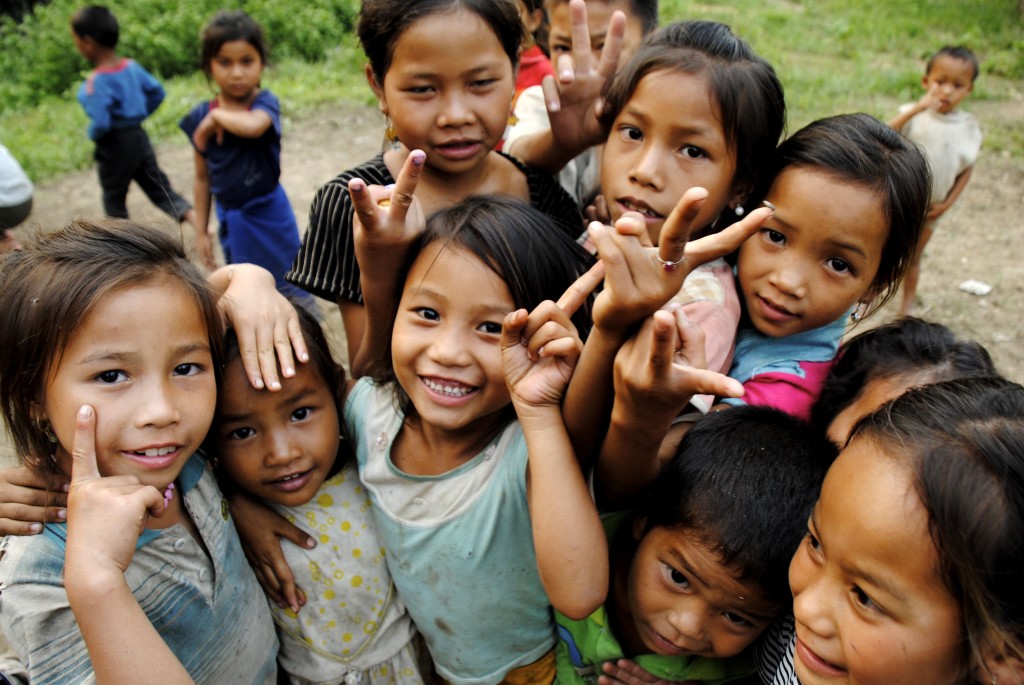
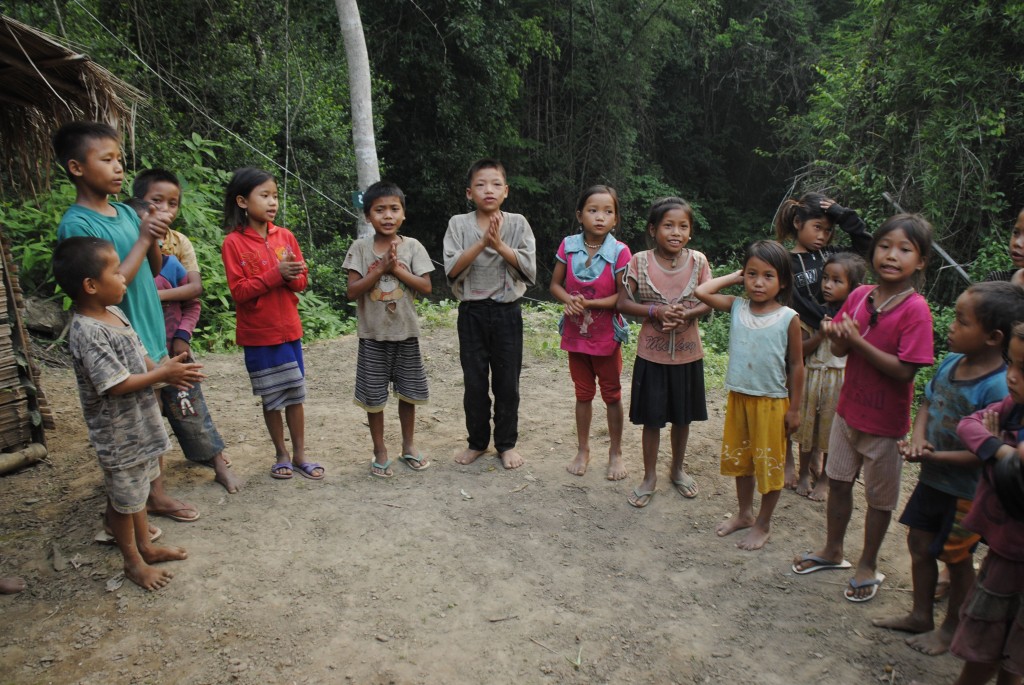
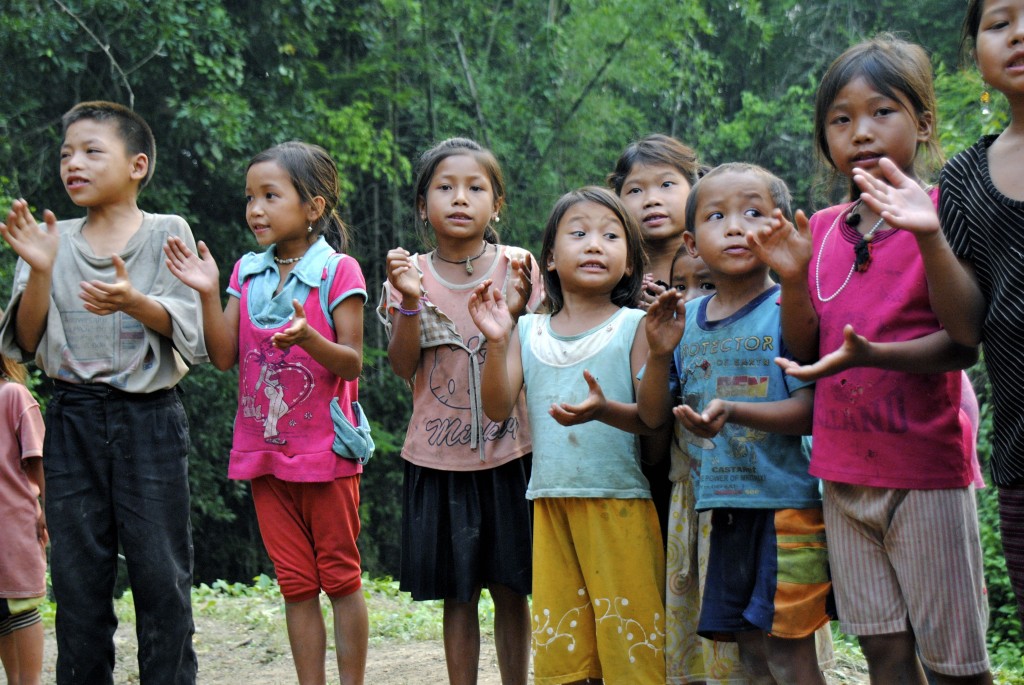
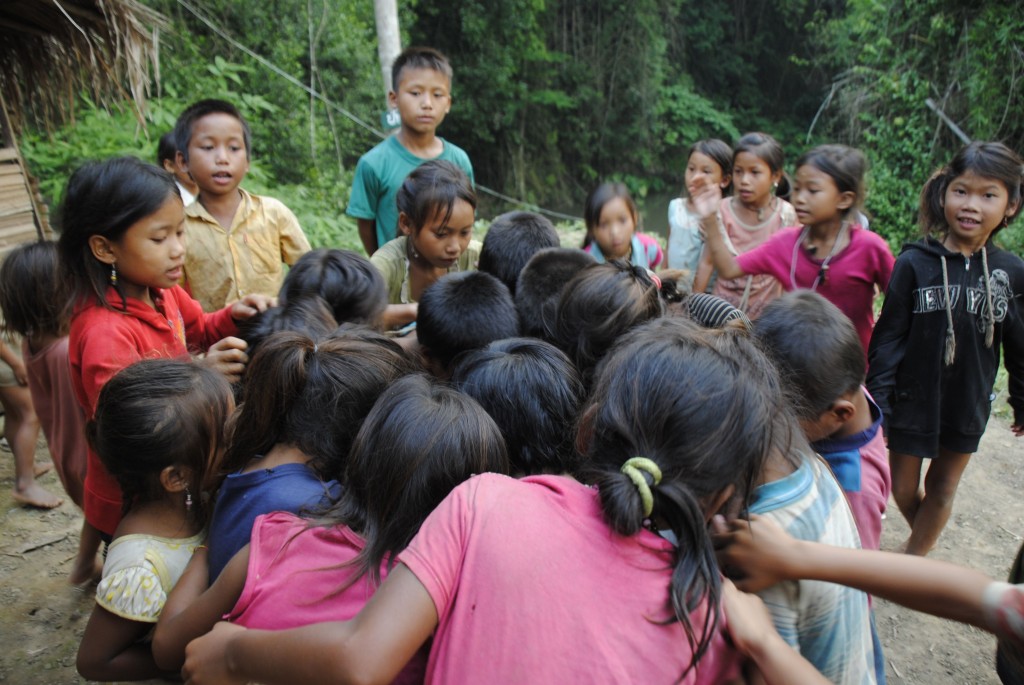
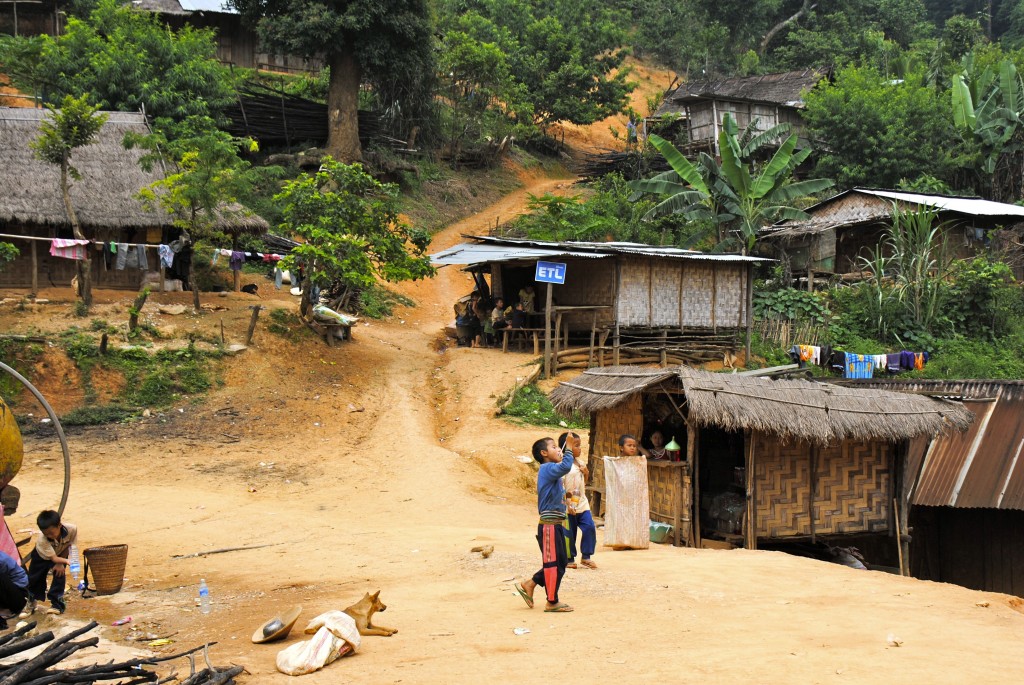
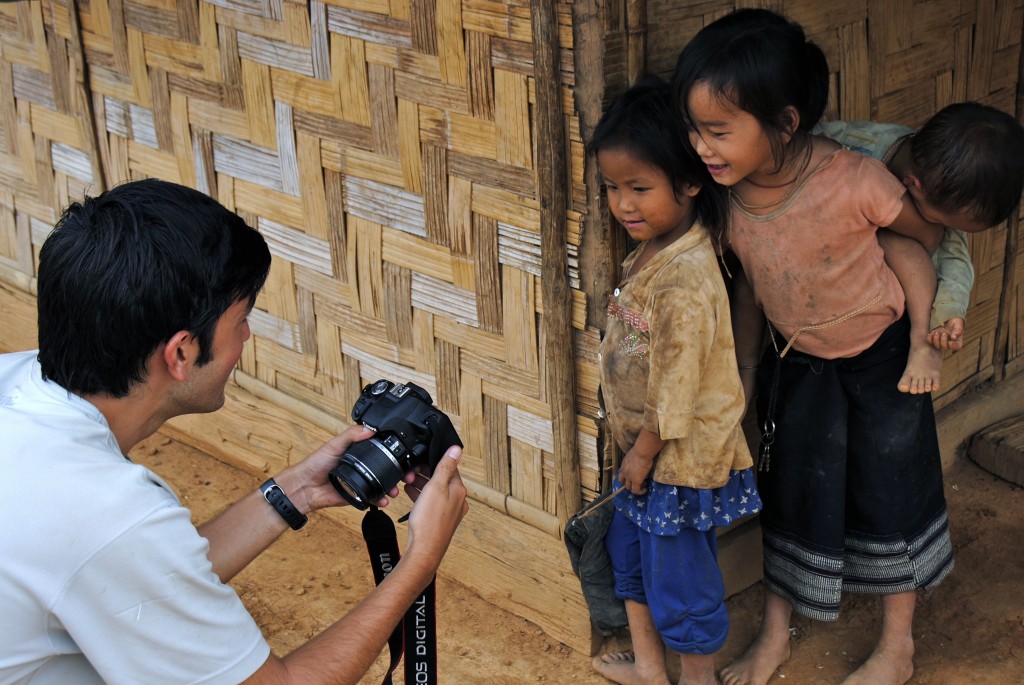
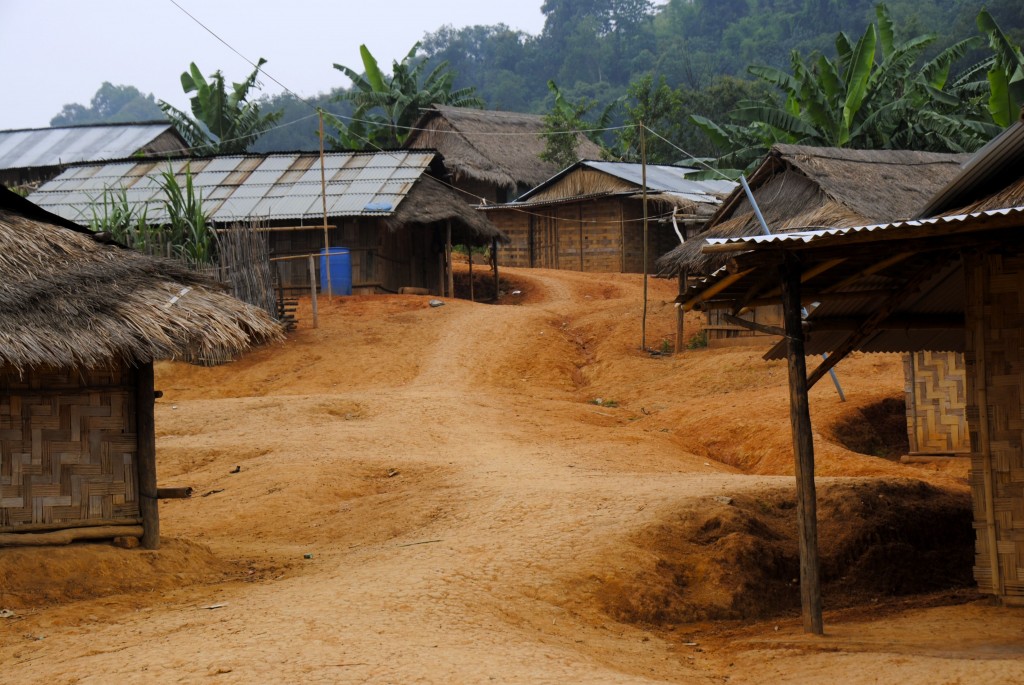
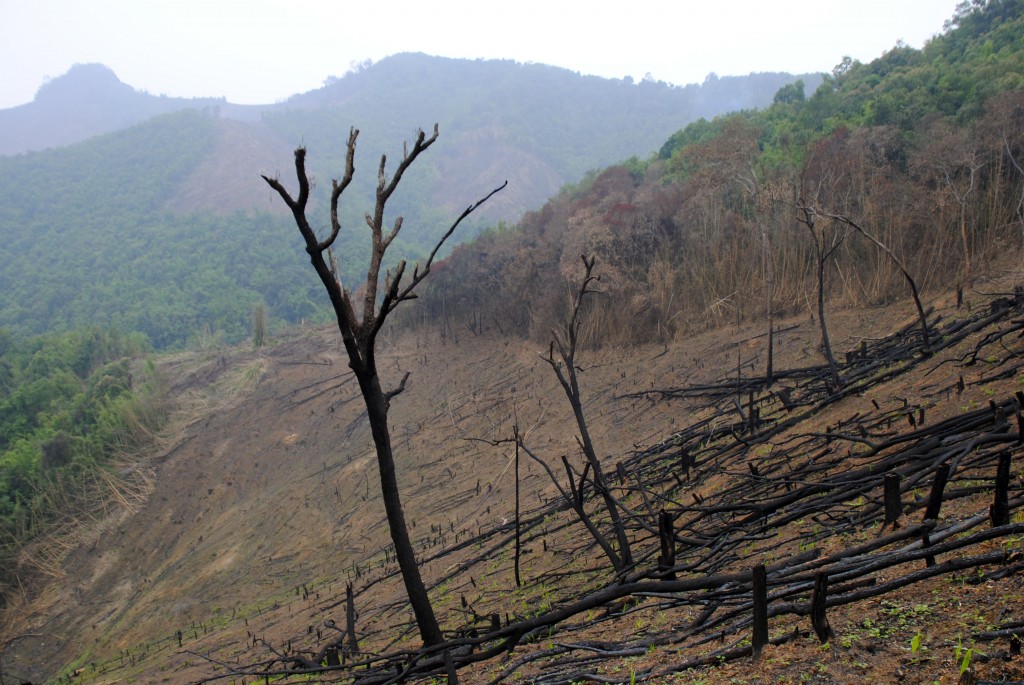

Hannah, I feel like I have a window into my own personal NatGEO site. These faces seem so familiar to me having grown up at a time when our countries were so unhappily connected. It is a blessing to see so many smiling faces now, and the video was precious! Thanks for taking me with you. You are an incredibly talented photographer and gifted ambassador.